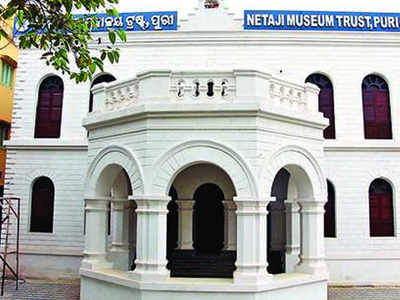Tracing Netaji’s Life Through These Museums In Odisha

Bhubaneswar: Inspired by the philosophy of Netaji Subhash Chandra Bose, legal practitioner Mohammad Mustaque of Badahat village in Kendrapara district has turned his home into a private miniature museum with several rare collections related to the life of the freedom fighter.
Though the district administration had promised to build a museum to preserve these rare collections related to the life of the revolutionary fighter, it is yet to see the light of the day.
The museum was proposed as these rare historical items collected by Mustaque were gathering dust in his house. In a part of his house, the lawyer has kept rare photos, documents, newspaper clippings, books, voice recordings and other historical sources related to Netaji.
Speaking to the media, Mustaque said that three years back the district administration had promised to build Netaji museum at Kendrapara to preserve all the objects that he had.
“I am ready to donate all my collections if the government sets up a museum in Kendrapara,” he said.
Netaji Museums in Odisha
CUTTACK
People can know about the life and struggle of the freedom fighter at the Netaji Museum at Odia Bazaar in Cuttack.
Netaji was born in Cuttack on January 23, 1897, at Janakinath Bhawan. This ancestral house has been converted into a museum by the Odisha Government.
A large gate with green sculptures of Netaji leading his Indian National Army (INA) stands at the approach road to the museum.
The study room has the table and chair of Netaji and his bookshelves.
Besides, his prison life, letters written by him from the prison have been stored in the museum. Marking the 121st birth anniversary of Netaji, the museum was inaugurated on January 23, 2010.
PURI
The Netaji Museum was inaugurated at Gopal Ballav Road in Puri on January 14.
Netaji’s house has been converted into a museum here. A life-size statue of Netaji on its premises was also unveiled on the occasion.
Several photos of Netaji, a gallery on his life, study room, postal stamp and a note on Azad Hind Fauj are part of the museum that has come up in its eight big rooms and a hall.
Visitors will have to pay Rs 10 per head for entry into the museum.
According to reports, Netaji’s father Janakinath Bose had taken about half acre of land near Puri beach in 1916 on lease and constructed a house where he was lived with his family. After his demise, the property was recorded in favour of his sons, including Netaji.
Later, Netaji’s relatives had filed a petition with the Revenue Officer in 1997 to alienate his name from the land records. Since they could not produce his death certificate, the court rejected their petition. Then, Puri Sambadik Sangha president Jagannath Bastia approached the Minister of Culture to take over the Netaji house and develop it into a museum. INTACH was entrusted with the task.

Comments are closed.